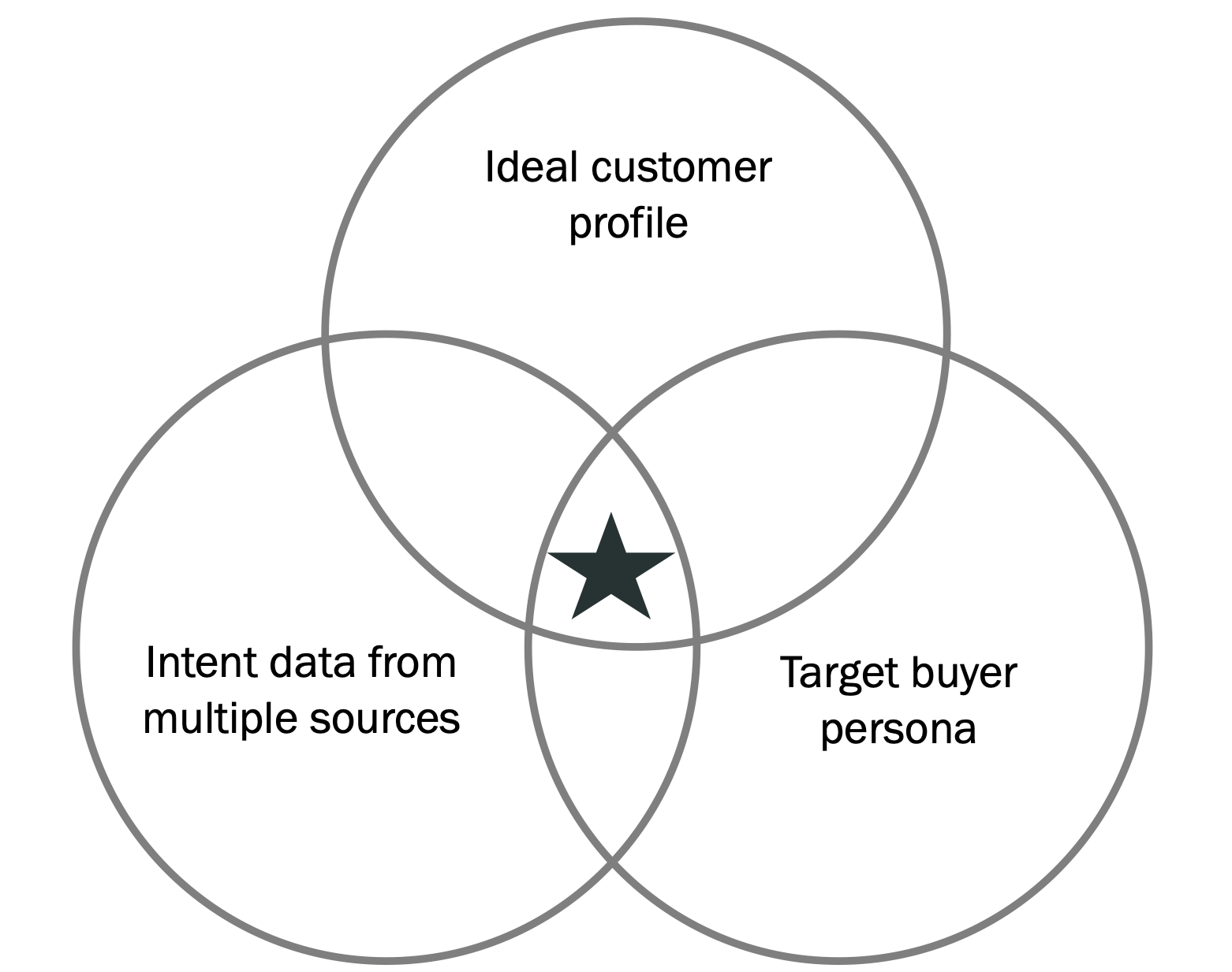Since its introduction, there has been a great debate as to whether this is really ABM or not. Some people claim it can’t possibly be true ABM, since it does not start with an individual account and its specific drivers and priorities. Others say that since it is targeted at named accounts, it is by definition account-based, rather than industry- or geography-based marketing. In North America, any conversations you have about ABM are about this type of ABM.
As time goes by, I think that this type of ABM is becoming more sophisticated, to the point where AI can identify and both contextualise and personalise marketing for specific individuals in each company context at scale and then help to orchestrate the online experience they receive with offline experiences delivered by other customer-facing teams.
Let’s look more closely at how and why this type of ABM is used, using data from Inflexion Group’s benchmarking study:
- Almost half of companies in our study are using Segment ABM – 48%.
- The majority are using it for a mix of new prospects and existing customers, with the latter being in the bottom 80% of existing customers who don’t warrant more resource-intensive types of ABM.
- On average, 500 companies are grouped together for programmatic ABM campaigns.
- Most companies curate existing content for specific buyer personas according to the stage of the buyer journey they are in for a solution.
- Programmatic ABM campaigns rely on digital tactics. Email marketing and digital advertising are reported as the most useful, followed by webinars and organic social media. Hospitality completes the top five rated tactics in these campaigns.
- Typical spend on a campaign is $36k, or roughly $72k per account in the group of 500.
The sweet spot for programmatic ABM campaign focus is companies that in your ideal customer profile, where target buyer personas are showing intent for the solutions you sell, as shown below.

Source: © Inflexion Group 2024. All rights reserved.
Here’s some more advice on how to be successful with this type of ABM from my colleague, Meg Heuer.
A perspective from Megan Heuer
How is Programmatic different from other types of ABM?
Instead of focusing intensely on one account or must-win opportunity, this style seeks to engage and convert multiple similar accounts or buying groups. For all ABM, the line between account-based and traditional marketing is whether go-to-market (GTM) actions are based on what we know about actual accounts versus what we want to say to those accounts regardless of who they are or what they need.
What do you see as the key stages in the Programmatic ABM process?
- Alignment: Ensuring executive team, product, sales, marketing, and any other groups impacted are aligned around the account-based GTM model and what it will require in terms of focus and resources/budget, including tech and outside services if needed. Agreeing on financial targets and timing and identify any dependencies or risks in the GTM plan.
- Selection: Defining the ideal customer profile, the characteristics (demographics, firmographics, psychographics) of target accounts and buyer personas, identifying actual target accounts, prioritizing target accounts. Defining goals, roles, and responsibilities for each team member involved.
- Preparation: Building demand maps of available opportunity within each account to set/reality check financial goals, gathering of insights on target accounts and personas (based on intent data, first-party data, AI-delivered research, and other scaled methods), crafting of messaging and content assets for marketing and sales, definition of tactics (delivery method and offers), building of a multi-tactic plan and timing of execution, and set up of technology as required. Agreeing the process for sales follow up on account activity and how information will be delivered to any GTM team members who need it. Delivering GTM team training and building of the plan for ongoing communication and change management.
- Production: Executing plans, ideally starting with pilots to test and refine. Ongoing optimization of plan and execution, ongoing communication to GTM team. Delivering regular updates to sales on what to expect in the week/month ahead so they are not surprised by activity in their accounts.
- Reporting: Defining goals, target metrics, and data sources for reporting. Setting baselines for internal performance to track improvement and seeking external benchmarks for comparison. Identifying near, mid, and long-term metrics to monitor progress and impact. Building reports appropriate for different audiences, from board and executive team updates, to weekly and monthly sales updates, to tactical daily insights for the marketing team. Defining how to include ABM results and plans in sales quarterly reviews or other relevant meetings/reporting cadence. Gathering qualitative feedback via surveys and interviews to improve the ABM programme’s impact.
What are some of the challenges in Programmatic ABM?
The biggest risk for Programmatic ABM is not using real customer insights to define tactics, messaging, and other activities. ABM (or any other marketing) becomes ineffective when GTM teams focus more on what they want to say about themselves and their products, and less on what target customers need. The second biggest risk is lack of alignment around which accounts to prioritise. When account focus shifts too frequently, it’s difficult to get traction in them, for both sales and marketing.
This switching of account focus is not a problem at Thales, where their programmatic ABM approach has been running since 2023.
Anatomy of a Programmatic ABM campaign
Elsa Toutlemonde, Team Lead for Global Demand Generation and ABM for Thales Data and Application Security, oversees a programmatic campaign that has been running since October 2023. It is focused on the company’s ‘Secrets Management’ solution; a relatively new offering that protects and automates access to secrets across tools and cloud workloads, and which is closely linked with CipherTrust, a Data Security platform.
When it was developed, the campaign was divided among three tiers of audiences. The first one targeted existing CipherTrust customers who were showing intent for the Secrets Management product. The second was also for existing customers, but more broadly for those in the Data Security portfolio. And the third was for prospects, a completely different audience.
When it began, the campaign aimed at the first tier was really about sales enablement, and the ABM-ers worked closely with the sales team. They created a sales playbook with everything sales would need, including information about the product, the competition and target personas. They also developed email templates geared to the account status: whether, for instance, they were already a competitor’s customer using their Secrets Management solution and Thales was trying to displace them, or to heighten awareness if they were non-users.
Other activities have included display ads on Demandbase and LinkedIn targeted ads along with webinars, while the social media team put out posts to share thought leadership. Field events were also held in various regions around the globe.
As the campaign continued into 2024 the focus began to shift more tightly onto the accounts in this first tier, since these customers would be able to integrate the Secrets Management solution into their existing systems more straightforwardly. Self-guided demos offered this audience different paths to experience the solution as well as a free trial. “The purpose of the campaign was to help build the pipeline for Secrets Management,” Toutlemonde explains. “But when we began, we realised we already had a healthy pipeline because many of the accounts in the first tier had been actually waiting for a solution like this.”
What she calls a pipeline acceleration campaign was mounted alongside the existing one with a more conversion-type of message. “So, we had two motions running in parallel and the good thing about Programmatic ABM is that you can set everything up from the beginning and then it’s automatic,” she notes. Accounts that move into a different stage of the buying journey can easily be transitioned to another, more appropriate message.
And it has been effective. The campaign had a significant impact on the number of opportunities and pipeline value generated in just six months, while the number of MQAs in the account list has risen from seven to 22 per cent. “The campaign has been successful in creating engagement and awareness and keeping the Thales brand top of mind in the market,” she concludes.




